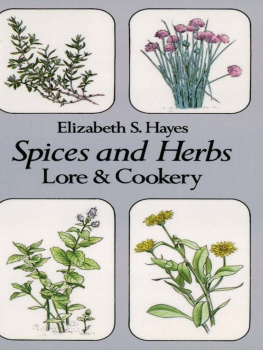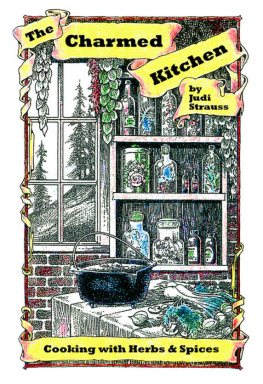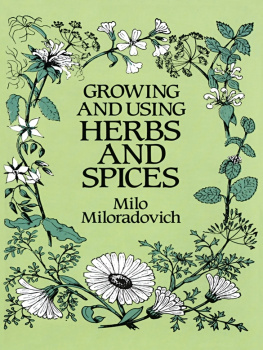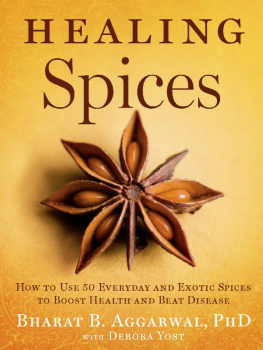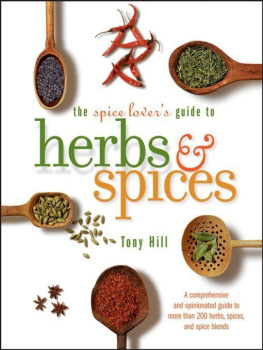van Wyk - Culinary Herbs & Spices of the World
Here you can read online van Wyk - Culinary Herbs & Spices of the World full text of the book (entire story) in english for free. Download pdf and epub, get meaning, cover and reviews about this ebook. year: 2014, publisher: BRIZA Publications, genre: Home and family. Description of the work, (preface) as well as reviews are available. Best literature library LitArk.com created for fans of good reading and offers a wide selection of genres:
Romance novel
Science fiction
Adventure
Detective
Science
History
Home and family
Prose
Art
Politics
Computer
Non-fiction
Religion
Business
Children
Humor
Choose a favorite category and find really read worthwhile books. Enjoy immersion in the world of imagination, feel the emotions of the characters or learn something new for yourself, make an fascinating discovery.

- Book:Culinary Herbs & Spices of the World
- Author:
- Publisher:BRIZA Publications
- Genre:
- Year:2014
- Rating:4 / 5
- Favourites:Add to favourites
- Your mark:
- 80
- 1
- 2
- 3
- 4
- 5
Culinary Herbs & Spices of the World: summary, description and annotation
We offer to read an annotation, description, summary or preface (depends on what the author of the book "Culinary Herbs & Spices of the World" wrote himself). If you haven't found the necessary information about the book — write in the comments, we will try to find it.
van Wyk: author's other books
Who wrote Culinary Herbs & Spices of the World? Find out the surname, the name of the author of the book and a list of all author's works by series.
Culinary Herbs & Spices of the World — read online for free the complete book (whole text) full work
Below is the text of the book, divided by pages. System saving the place of the last page read, allows you to conveniently read the book "Culinary Herbs & Spices of the World" online for free, without having to search again every time where you left off. Put a bookmark, and you can go to the page where you finished reading at any time.
Font size:
Interval:
Bookmark:

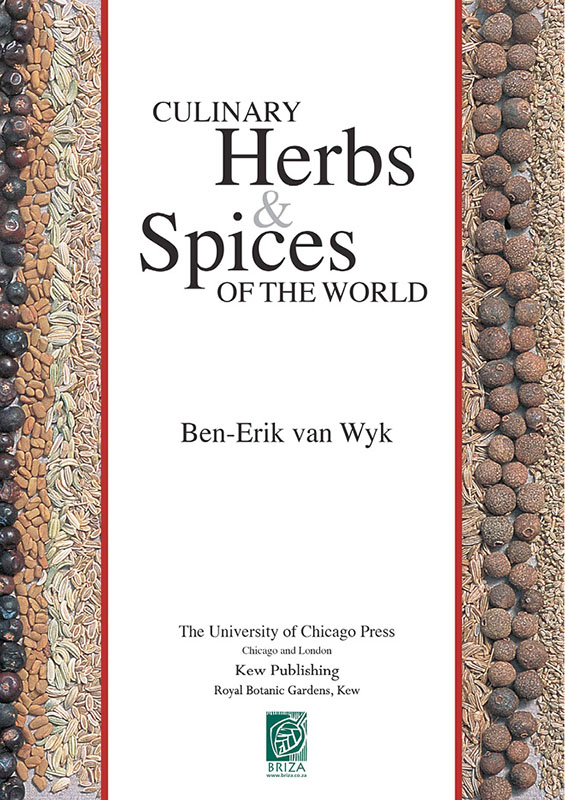
This book is aimed at providing a broad birds eye view of all or most of the commercially relevant culinary herbs and spices of the world. It is not a recipe book but a quick reference guide to the physical appearance, correct names, botany, geographical origin, history, cultivation, harvesting, culinary uses and flavour chemistry of more than 120 different herbs and spices from all the well-known culinary traditions of the world. An attempt is made to paint a new picture of the fascinating complexity and great wonders that are associated with an everyday activity, namely the enjoyment of food.
It is a blessing to be amongst those who are able to experience food as much more than just a means of staying alive. Mealtimes provide the opportunity for family bonding and social interaction. It is a time for taking delight in the shapes and colours of the meal, carefully prepared and skilfully presented by the expert chef. We take time out to experience the complex interactions and synergisms (and yin yang effects) of sweet, bitter, salty, sour and savoury (umami) tastes. Finally, it is perhaps also a time to marvel at the wonderful aromas that emanate from the kitchen, and to reflect on the underlying principles of flavour perception and the complicated evolutionary and cultural interactions that have resulted in the endless diversity of aroma compounds and their sensory effects.
For many of us (including this botanist), the journey of culinary discovery is just beginning. Judged by the levels of culinary and cultural diversity I have been confronted with during many years of researching and several months of writing, the end of the journey is not yet in sight, perhaps not even for the most experienced of food gurus among us.
I hope that the book succeeds in conceptualising some of the complexities of food cultures and in providing new perspectives on the diversity of flavours and aromas. It is my wish to add to the sensual delights an intellectual and scientific stimulation that some readers will hopefully enjoy almost as much as their favourite dishes.
Ben-Erik van Wyk
Johannesburg, August 2013
Spices have become freely available today and form the basis of a grand new adventure a culinary exploration of the world, and a journey to discover new tastes and recipes from far corners of the earth. Some of us are fortunate enough to travel the world and experience the sights and sounds that go along with local food in various parts of the globe. But the Information Age allows even the most sedentary among us to enjoy the marvellous diversity of cuisines from around the world via the internet and the numerous food channels on television. We can all enrich our everyday lives by exploring new tastes and flavours and the many exotic products and recipes that have become part of our wonderful modern world.
From my own culinary and botanical perspective, the world can be roughly divided into seven major cuisine families: 1: Sub-Saharan Africa, where food is often considered rather bland by outsiders and where flavour was traditionally provided by the ingredients themselves rather than by herbs and spices. The traditional staple foods are yams ( fufu ) and cereals such as finger millet, pearl millet and sorghum, eaten in the form of porridges and gruels. 2: The Middle East, representing an early fusion of Eastern and Western cooking traditions, and the origin of many present-day European culinary practices. No wonder, this is after all the place of origin of bread wheat and bread. 3: South Asia (India and surrounding countries), where people eat food by hand (normally using only the right hand) and where spices (and spiciness) have been developed to a fine art. This is the traditional home of black pepper, cinnamon, ginger, cardamom and masala. 4: East Asia (mainly China, Japan and Korea), a region of extreme culinary diversity and customs, strongly characterized by chopsticks and fermented (savoury) sauces, and rice as the staple food. 5: Southeast Asia (Malaysia, Thailand, Vietnam and Indonesia), where a fork (in the left hand) and spoon (in the right hand) are often used, and where elements of both South and East Asian cooking have been incorporated into local traditions. It is the birthplace of many spices, including cloves, nutmeg and mace. 6: Europe and many of its former colonies, where the knife and fork are the main utensils for eating. Traditional spices are few and far between, hence the need for an overland and maritime spice trade and its dramatic human cultural upheavals, still with us today. 7: The New World, with marvels such as chilli pepper, vanilla and chocolate, not to mention corn (maize), beans, pumpkins and tomatoes. Today it is the ultimate mosaic of fusion foods, ranging from authentic Inca, Mexican and Canadian-aboriginal to Creole, Cajun, Tex-Mex, Chinese-American, African-American Soul Food and many more.
The adventure of exploring the culinary diversity of the world also involves the age-old tradition of growing your own vegetables and herbs, not only to have access to fresh food items but also to enjoy the pleasure of being self-sufficient or to experience the fulfilment that comes from creating a beautiful herb garden. Many city-dwellers today have limited space, but people often grow fresh herbs in containers on the balcony or even on the window sill. The modern herb garden sometimes takes the shape of a large ceramic or terracotta pot with a lemon tree (or cherry tomato) as centre-piece, surrounded by parsley, basil, thyme, chives and other favourite herbs.
Another part of the new adventure is to learn more about the terminology and intricate relationships between the biology, botany, physiology and chemistry of tastes and flavours. New information is becoming available on an unprecedented scale but is not always reliable and rarely presents a complete synthesis and birds eye view of a subject, such as culinary herbs and spices. The aim of this book is therefore to supply a broad new perspective of the scientific (botanical and chemical) principles of tastes and flavours and to make an interesting and colourful contribution to the culinary exploration of the world.
Herbs and spices are as intriguing today as they were 400 years ago when the exploration of the world was driven by the fabulous wealth created by a lucrative international trade. The early silk and spice routes from east to west were monopolized by Arab traders and various countries and city states in the western Mediterranean region, who all shared in the rich bounty.
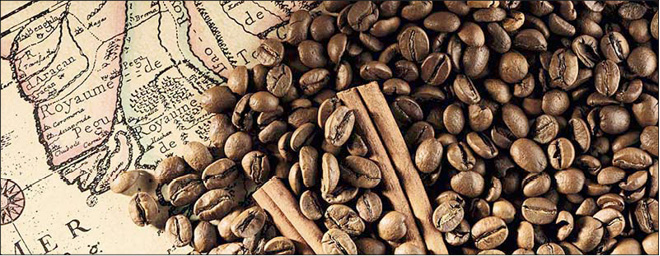
Spices first reached Constantinople and Alexandria, from where they were taken to Venice, Naples and Genoa in Italy, and from there to the rest of Europe. Spices were in high demand because of the poor quality of the food and the lack of a means to preserve meat, other than salt. During the medieval spice craze, shortages in supply resulted in a diversity of local spices that were used as substitutes or adulterants. The role of local, indigenous herbs and spices such as alecost and Melegueta pepper is now just a distant memory, as they were almost completely replaced by hops and black pepper respectively. Also long forgotten is the fact that the enormous spice wealth in northern Italy and the rich people who patronized architects, artists, authors and philosophers actually created the Renaissance. The overland monopolies were broken by the development of alternative sea routes, and colonial powers such as Portugal, Spain, the Netherlands, France and Britain all controlled and defended their access to spices and associated source areas at one time or another. Key moments were 12 October 1492, when the Spanish explorer Columbus reached the Bahamas and discovered aji (chilli peppers) and 20 May 1498, when the Portuguese sailor Vasco da Gama stepped ashore at Calicut in India, thus establishing a sea route to the east around the Cape of Good Hope. This was the Age of Discovery, an exciting but brutal time during which the full extent of the earth and its rich bounty of culinary delights became much better known. The profound effects that the spice trade has had on determining where and how we live and eat today is no longer much thought about but it is true to say that spices were the driving force that changed and opened up the world.
Font size:
Interval:
Bookmark:
Similar books «Culinary Herbs & Spices of the World»
Look at similar books to Culinary Herbs & Spices of the World. We have selected literature similar in name and meaning in the hope of providing readers with more options to find new, interesting, not yet read works.
Discussion, reviews of the book Culinary Herbs & Spices of the World and just readers' own opinions. Leave your comments, write what you think about the work, its meaning or the main characters. Specify what exactly you liked and what you didn't like, and why you think so.




